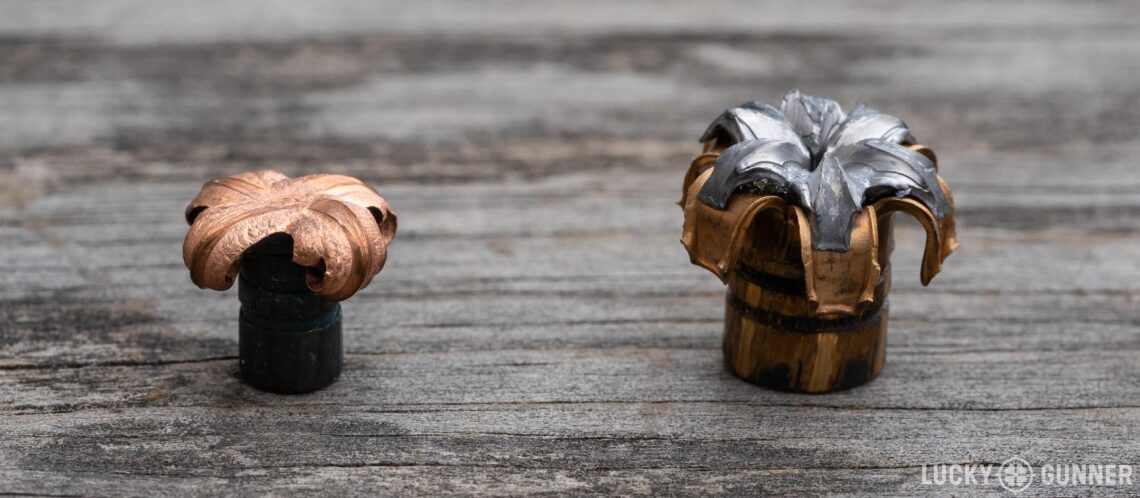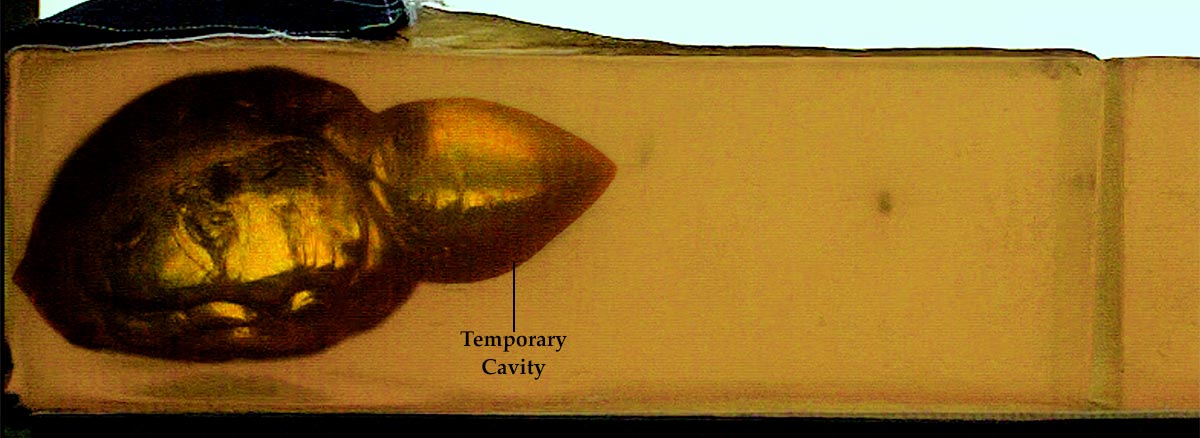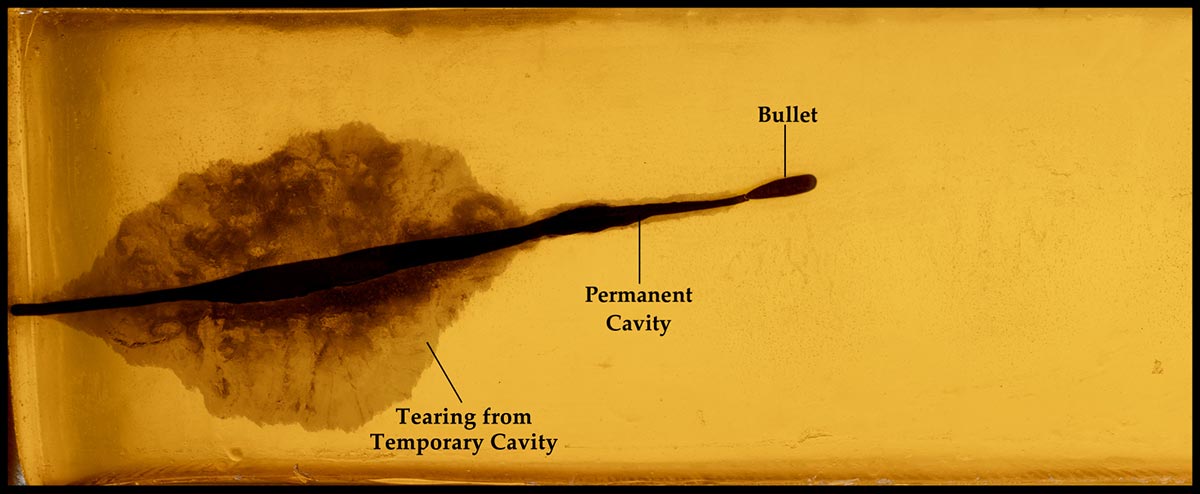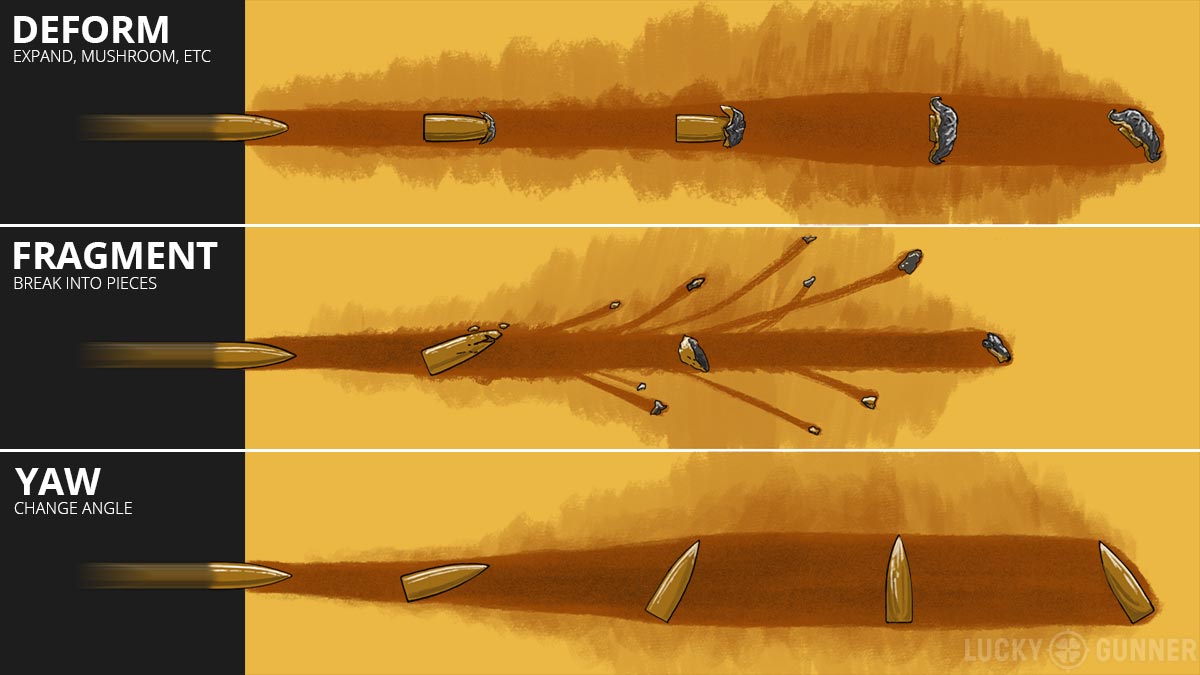For the last 100+ years, a great deal of the effort expended in ammo technology has gone toward trying to make pistol bullets act more like rifle bullets. Every few years, a new cartridge or bullet design arrives on the scene, claiming to have gotten us just a little closer to the fabled “pistol with rifle performance.”
Before we try to evaluate these claims, it really helps to have a basic understanding of terminal ballistics. And that starts with understanding why rifles behave like rifles, and pistols behave like pistols.
Details are in the video below, or scroll down to read the full transcript.
Hey everybody, I’m Chris Baker from LuckyGunner.com and today I’m going to talk about why some bullets are more effective than others – specifically, why rifles completely out-perform pistols.
Really, this is going to serve as kind of an introduction to terminal ballistics. That’s the study of what bullets do once they hit the target. If the target is an animal or human, that’s terminal wound ballistics. I’m definitely not an expert on that topic, but I’ve learned a lot from people who are. You don’t have to get very deep into it before terminal ballistics can start to feel overly technical. I’m going to try to skip the more academic stuff and keep us grounded in the real world question rifles versus pistols.
Keep in mind that bullets and bodies behave in unpredictable ways and there are no guarantees about what will happen. Also, there is not actually any hard technical distinction between rifle and pistol cartridges. So bear with me here – I’m going to make broad generalizations to keep this simple, but there are plenty of exceptions and gray areas that would just take too long to cover.
We all know rifle rounds are more effective than pistol rounds. But what does “effective” actually mean? For today, we’re going to narrow our context to defending against a violent human attacker. In that case, an effective bullet would be one that makes that attacker stop trying to hurt people as quickly as possible.
The Dark Ages of Terminal Ballistics
Since the dawn of handheld firearms technology, we’ve known that bigger and/or faster projectiles are better. The “why” and “how” behind that is something we’ve only recently come to understand. Endless myths and misconceptions pervaded the field of wound ballistics for many years, and some of those myths are still widely believed today. That’s because until around the 1970s and 80s, wound ballistics research was mostly conducted by experts in firearm and ammo design who only had a layman’s understanding of the human body.
That led to a bunch of made-up bro-science theories that don’t explain gunshot wounds in a meaningful way. For example, the theory of “Kinetic Energy transfer” is still fairly popular. It’s not entirely wrong, it’s just incomplete. Kinetic energy is transferred from the bullet to the target. But nobody’s ever had their official cause of death recorded as “energy transfer.” What’s important is how that energy is used and what kind of damage results.
The Modern Era
Modern wound ballistics research really started with Army surgeon Dr. Martin Fackler. He’s the guy who gave us the standard for what we now call 10% FBI ballistic gelatin. Others had used gelatin before, but there was no standardized method for making the gel blocks or calibrating them. My gelatin could be more dense than yours, so any comparison of our test results would essentially be meaningless.
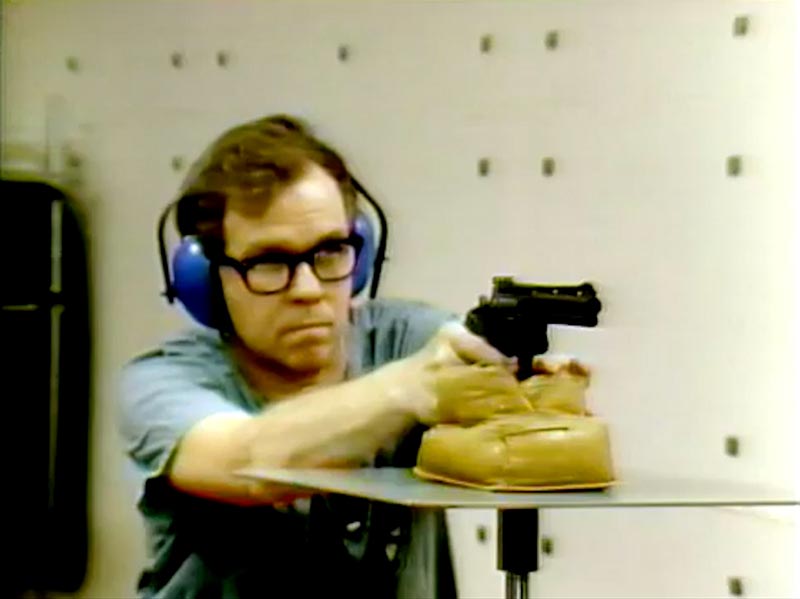
Fackler, along with other researchers, also compared gel tests to actual gunshot wounds from the battlefield and from animal tests to verify that it’s an accurate simulant. It’s not perfect, but so far it’s the best model we have for predicting what a bullet is likely to do in human tissue.
Fackler and other medical professionals were also able to identify the specifics of how exactly bullets cause wounds. And it actually turned out to be pretty straightforward.
There are two types of wounds bullets can inflict that will force the body to stop moving:
- They can disrupt the central nervous system (or “CNS”) with damage to the brain or spinal cord. That effect is instant.
- They can cause damage that ultimately deprives the brain of oxygen, either through blood loss or damage to vital organs. That tends to take a little longer. Sometimes just a couple of seconds, but it could also be several minutes. Someone who’s really determined or in an altered mental state can potentially continue to be a deadly threat for 10 to 15 seconds even after the heart stops functioning.
A CNS hit is the ideal way to stop a deadly threat. But the brain and spine are difficult targets to hit on a moving subject. So modern defensive shooting doctrine is to aim for the upper chest area because it’s a larger target and it contains the heart, lungs, and aorta.
So we’ve got two types of incapacitating wounds and there are two ways bullets can cause that damage. They are:
- The permanent cavity
- The temporary cavity.
The Permanent Cavity
The permanent cavity is also known as the wound channel or wound track. This is simply the tissue that is cut and crushed by the bullet as it passes through. If the bullet hits something important enough, the target will be incapacitated. The larger the bullet, the more likely it is to hit something important. Larger permanent cavities also cause more rapid blood loss. But any bullet can be effective with good shot placement and adequate penetration. In ballistic gel, adequate penetration is considered to be at least 12 inches.
The Temporary Cavity
The temporary cavity is the one that’s most often misunderstood. Shortly after the bullet impacts, it creates an opening in the tissue that lasts about 10 milliseconds. It looks really impressive in ballistic gelatin with a high speed camera, but the actual wounding effects are often exaggerated.
The severity of damage caused by the temporary cavity is somewhat unpredictable. It depends a lot on the shape, size, and velocity of the bullet, as well as the size of the person and the organs affected. Most tissue in the body is fairly elastic and snaps right back into place with no lasting damage. To cause permanent damage, the temporary cavity has to stretch far enough to overwhelm the elastic limit of that tissue.
Handguns and the Temporary Cavity
Handguns typically do not have nearly enough velocity to create a temporary cavity that will make a difference within the few seconds of a gunfight. This is one of the major distinctions between rifles and pistols.
With pistols, we can only count on the permanent cavity. An expanding hollow-point will create a wider permanent cavity, but ballistics experts debate whether even that has any effect on the outcome of most cases. What they do all agree on is that shot placement and penetration are, by far, more important than any other considerations.
Here’s an expanding 9mm in FBI gel. The temporary cavity makes a nice spiral shape that looks pretty intense. But let’s see what it actually left behind. It’s a good permanent cavity that just makes it to 12 inches. If it can do that consistently, this would be considered adequate by handgun standards. The tearing from the temporary cavity maxes out at about 2 and a half inches in height and width and it’s five inches long. That’s fairly insignificant compared to what we can count on an effective rifle bullet to do.
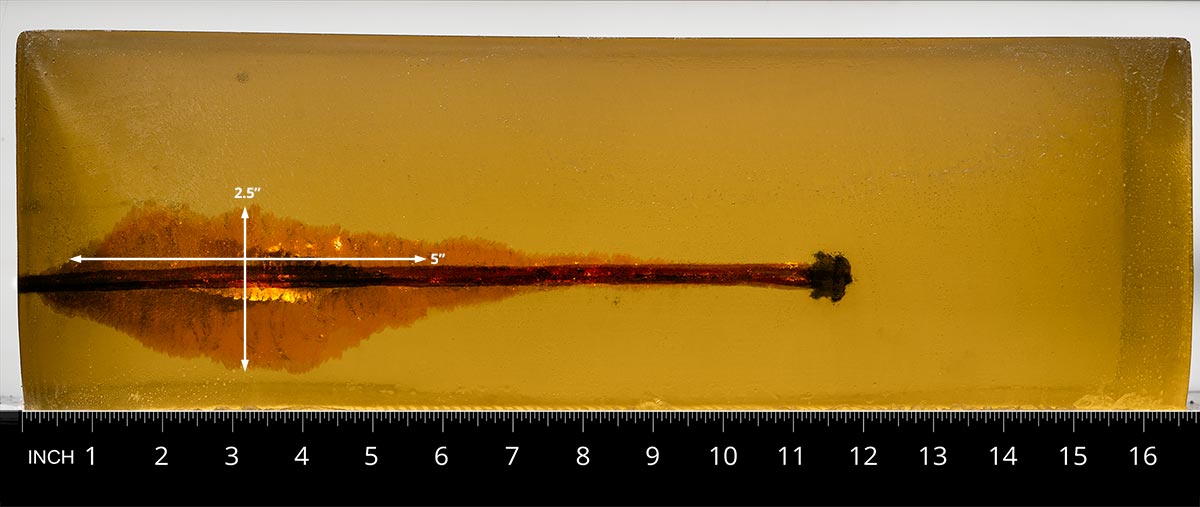
How Much Velocity is Enough?
The question everyone asks is “how much velocity do we need in order to get adequate penetration and an effective temporary cavity?” That’s difficult to answer because velocity is not the only factor at play. A common rule of thumb is that you need a minimum velocity somewhere around 2000 to 2500 feet per second. But there’s nothing magic about that threshold. There are plenty of loads that meet or well exceed that velocity but still have sub-par performance.
A big temporary cavity requires velocity and effective bullet design. Usually, that means they have to deform, fragment, or yaw. Any of those three things can enlarge both the temporary and permanent cavities.
Let’s see how that looks in gelatin. This is a Barnes TSX all-copper expanding .223 Remington. It opens up shortly after impact which creates drag. That slows the bullet down, and the energy is transferred to the surrounding tissue. This one has also fragmented a little. The biggest chunk does exit the back of the gel block, but it’s not moving very fast. Most of its energy was used up in the block.
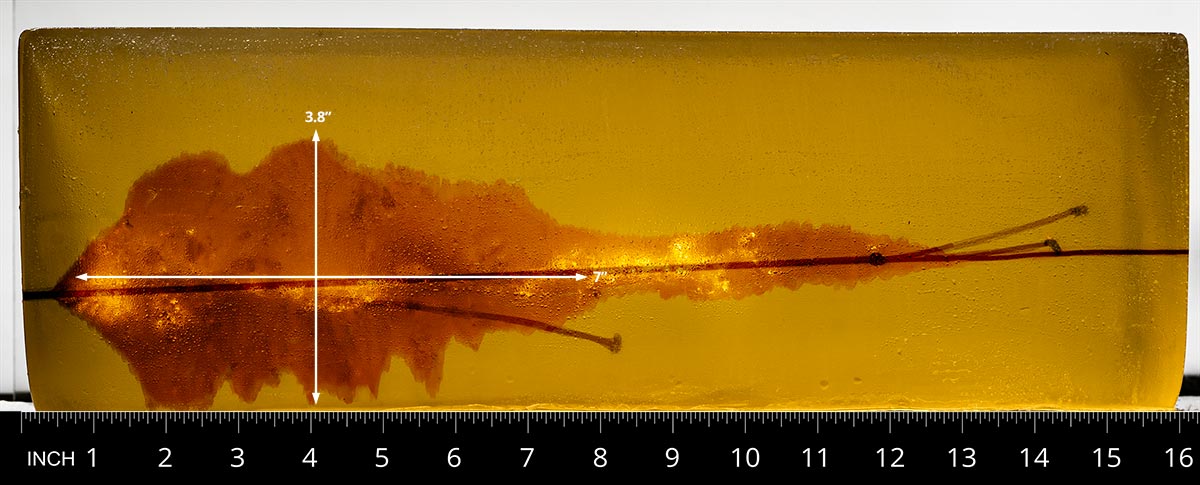
As far as I know, there’s not a specific pass/fail standard for the temporary cavity like there is for penetration. I get the impression that most ballistic experts would probably say that what we get from an expanding .223 is close to the minimum threshold. The ones I’ve seen tend to be at least four inches in height and width and seven or eight inches long. That’s pretty much what we have in this case.
Failure to Perform
Now let’s see what happens when a high velocity bullet fails to perform like it’s designed to. M193 is an old 5.56 military load that’s still very common today. When it works, the bullet will yaw and fragment. The fragmentation weakens the elasticity of the surrounding tissue which makes the temporary cavity do some really nasty things. But in our gel test… that’s not what happened (seen at the 8:43 mark in the video above).
The bullet yaws but does not fragment. It stops just shy of the 10-inch mark and then slowly makes its way up and out the top of the gel block. So we got lousy penetration, an unimpressive temporary cavity, and no fragmentation. This was either a bad batch of M193, or the 16-inch barrel didn’t give it enough velocity to do what it was supposed to. In any case, this shows us why bullet quality is just as important as velocity or caliber. A sub-par rifle round may be less effective than even a mediocre pistol round that penetrates.
A “Real” Rifle Cartridge
5.56 and .223 are just on the edge of effective rifle cartridge territory. Let’s look at a cartridge that has a lot more energy to work with. Here’s another Barnes TSX, but this time it’s a 150-grain .308 Winchester. The bullet expands and creates a huge temporary cavity. It actually tore through the bottom of the block and messed up our table top. We would really need a larger gel block to adequately test cartridges like this. The leap from 5.56 to .308 is a pretty big one.
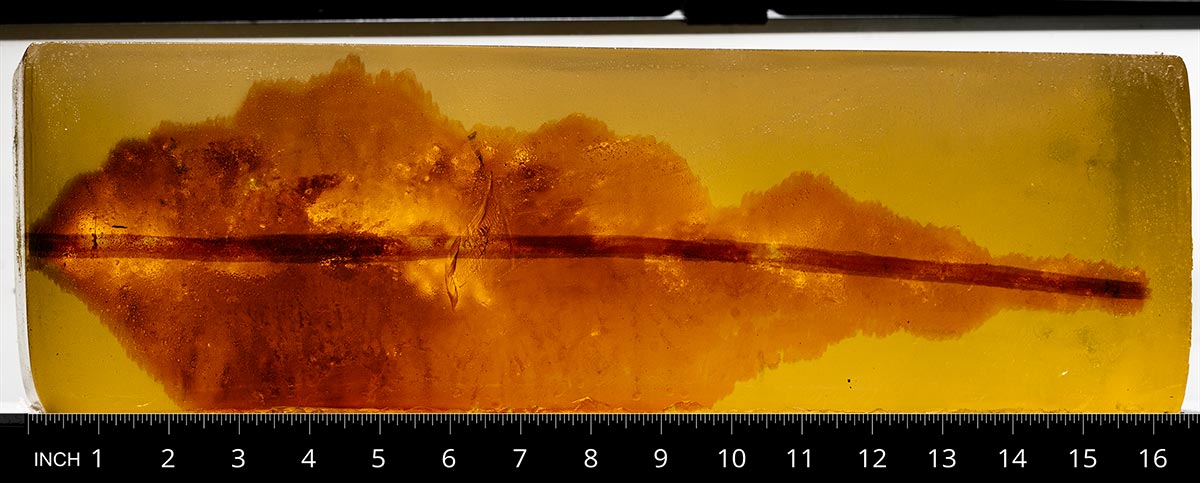
Temporary Cavity at Low Velocity
Another question I hear all the time is “What about really heavy but slow projectiles? Can’t they be just as effective as high velocity rifle rounds?” Yes, they can. With enough mass, a slower projectile can create a temporary cavity with serious wounding potential. You can get there with a handgun, but it’s going to have to be one of the really big bore hunting revolvers for it to be on par with a rifle load. And bullet design is still a crucial component.
For example, here we’ve got a .45-70 with a 405-grain soft point bullet. It’s going 1300 feet per second, about half the velocity of the .223s we looked at. It sailed right through the gel block, making a very long temporary cavity. It also penetrated an entire 16-inch block of Clear Gel that we had behind the first block. So we did not recover the bullet, but it’s probably a safe bet that it didn’t deform much. The temporary cavity is long, but the width and height max out at three inches. It’s a lot of energy used in a very inefficient way.
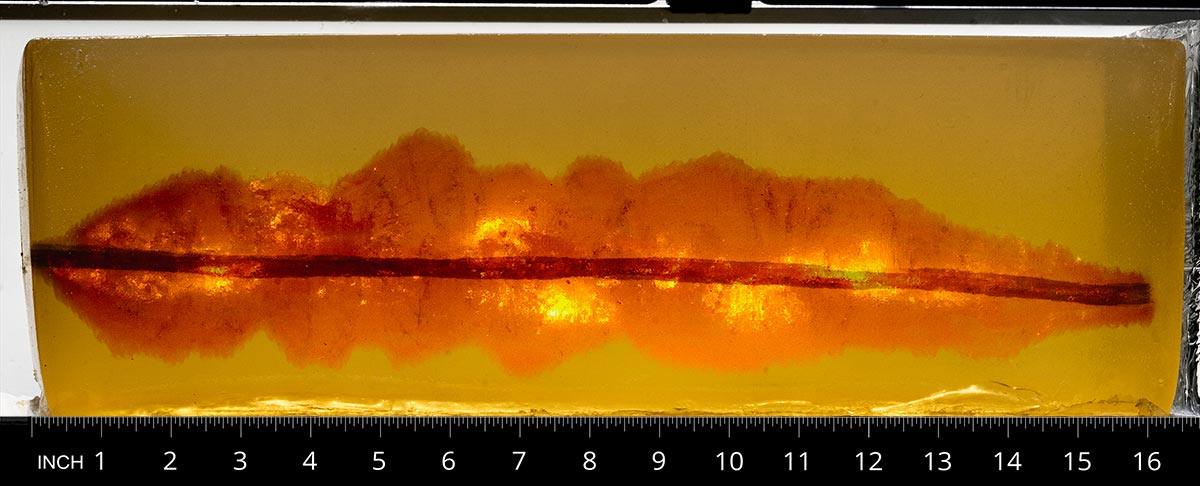
If that bullet had expanded, it might have performed more like this next one. This is a 12 gauge Fiocchi Low Recoil slug. It’s a 1-ounce slug (that’s equivalent to about 438 grains) fired at 1100 feet per second. Pretty slow by 12 gauge standards. The slug expanded to a one inch donut shape and flipped sideways. 15.8 inches of penetration and a massive temporary cavity. You can see it tear right through the side of the block there. That is how you get rifle performance out of a slower projectile.
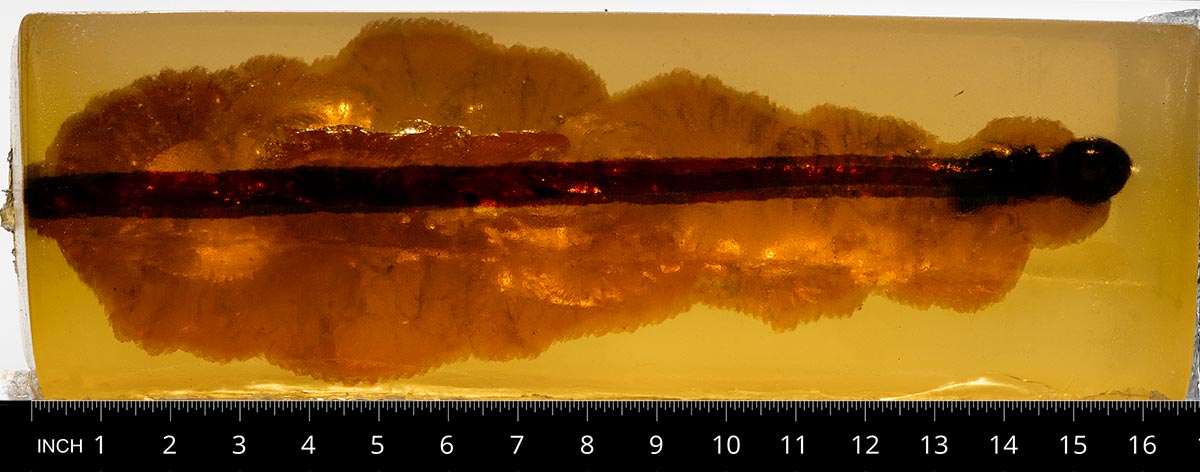
Psychological Factors
Now, what complicates all of this are psychological factors. I don’t want to get too deep into this, but I have to at least mention it. In reality, a large percentage of attackers who are shot by armed citizens stop doing bad things without being physically incapacitated. Whether it’s an unconscious reflex or survival instinct or a conscious decision, when a predator realizes they’ve made a serious error in victim selection, they tend to go away. That doesn’t mean bullet effectiveness is irrelevant. Some people just refuse to quit until you hit the off switch. I also think there’s a very good chance that the severity of the wound can influence the psychological factors. But this is not a topic that’s been studied much so that’s just speculation.
Regardless of your gear choices, just remember shot placement is what matters most. That requires a lot of practice, which means you’re going to need some ammo. So be sure to get it from us with lightning fast shipping at LuckyGunner.com.
